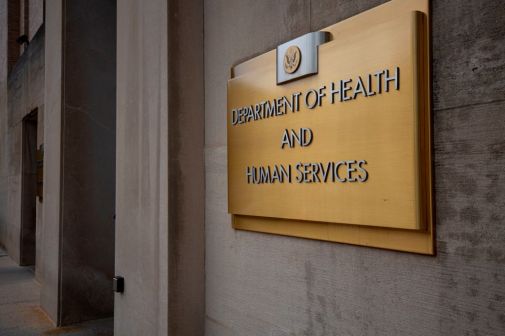Exclusive: HHS to lead 2-year DATA Act pilot
The Digital Accountability and Transparency Act is in full swing, with the Office of Management and Budget and the Treasury Department catching headlines in their path to issue a governmentwide set of financial data standards by May 2015. But quietly in the background, the Department of Health and Human Services is gearing up to lead a two-year pilot of the DATA Act to test how data standardization in a complex federal ecosystem works.
Section 5 of the DATA Act — a mandate for financial data transparency in conjunction with USAspending.gov — requires OMB to launch a pilot, and the office chose HHS to test the waters of the act’s massive and complex data standardization efforts. Beginning next May, a year after the act was signed into law, HHS will be the test dummy for the grant portion of the DATA Act to help OMB, the Treasury and the federal government as a whole better understand things like “the impact of data standardization across many different lines of business” and “where there are opportunities to eliminate unnecessary duplication of financial reporting,” Amy Haseltine, director of DATA Act Program Management Office and chief DATA Act officer with HHS, explained to FedScoop.
Within 90 days of the two-year pilot’s conclusion, OMB will file a report on its findings. While OMB hasn’t yet keyed in on the scope of what it wants the pilot to look like, Haseltine sees three basic components HHS will surely explore:
- The role technology can play in facilitating the development and use of data standards and the reuse. “Technology is a critical piece to that puzzle,” she told FedScoop.
- What is the benefit to our recipient community? “Can we see an increase in the understanding of the types of requests we are making because we’re asking similar questions based on the same standards again and again and again and again?” Haseltine said. “In theory, I think as you utilize a data standard in one data collection and it gets reused in other information collections over time, the population of people that are responding to the information collection will become more and more familiar with what those questions mean and what those standards require in terms of information back to the federal government.”
- The exploration of challenges associated with adopting the standards. “Certainly we live in an information-rich society,” she said. “A large portion of what we do on a day-to-day basis involves the exchange of information through systems. And so when we think of the DATA Act, we need to think about not only the incorporation of these data standards into our policies, but we also have to think about how they could be incorporated both on the federal side and the recipient side into some of the systems.”
So why is HHS bestowed with such an honor and massive responsibility?
It could be “because we’re awesome,” quipped Bryan Sivak, chief technology officer of HHS. But more seriously, it’s likely because of HHS’ long-standing dedication to an open data ecosystem and the massive amount of financial transactions it encounters.
“We’ve spent the last five or so years here at HHS really drilling it into the culture that this stuff is important,” Sivak said. “Five years ago when we first started asking the question ‘Why don’t we make this public?’ people looked at us like we had three heads. Now it’s almost the default to say ‘How do we make this public?’ when looking at a data set for the first time or looking at something that already exists.”
That kind of mindset reduces the cultural barriers that some agencies lagging behind the open data era might face. But HHS, because of its towering hierarchy of sub-agencies, institutes and other offices, will also face a complex test in standardizing data elements across so many internal component agencies — in a way, a microcosm of the challenges the greater federal government will eventually face.
“If we can figure out how to do it in this complex environment, that makes it obviously that much easier for people in less complex environments to do the same thing,” Sivak said. “It’s important to understand exactly how complex the federal budgeting and financial environment actually is.” There’s a slew of problems like “how to communicate the information in a way the public would actually understand it,” he said. “Part of the challenge here is that I don’t know that the complexity of this world is really well understood. So part of why the pilot is necessary, part of why a lot this work is necessary is actually to understand how that complexity can be reduced to something that we can put out there and people can actually wrap their heads around.”
“HHS has been working with OMB for about a year and a half now trying to better understand and doing some actual research into some of the challenges and opportunities with developing data standards and using those data standards to foster data transparency, and to a greater degree the financial accountability,” Haseltine said. “There’s a benefit in understanding that great diversity.”
Much of the diversity HHS hopes to explore stems back to communication. Haseltine and her DATA Act Program Management Office coined a term called the Fab Five that represents the five categories in which different agencies typically don’t match up with regards to their data definitions.
“As you look across many facets of financial information, there’s about five major categories where, depending upon the community, we have different words we use to mean very similar things” or vice versa, she said of the Fab Five, which are: the collection of information related to organization, how a government program is described, the place of performance, the period of performance and the concept of amount. “It doesn’t make any of it wrong — it just makes it all different,” Haseltine said.
This two-year pilot of the act is by no means a walk in the park, though all agencies are required by May 2017 to report their financial statements in accordance with the new standards. But Haseltine thinks HHS will benefit greatly from its work.
“Ultimately what HHS gets out of this is knowledge, and knowledge is very powerful,” she said. “It certainly will help us move the ball forward as it relates to our own initiatives in transparency. I think any information we glean from the pilot will be beneficial to HHS, and obviously we hope beneficial to others across the federal community in terms of the implications and the opportunities for data standardization. At the end of the day, the DATA Act in and of itself really is about transparency and accountability, which are the fundamental aspects of our government …We have a mission to carry out at HHS, and the better information we have, the greater access we have to the information and the more we can take that information and use it for many different purposes, the better we’re able to carry out the mission.”






